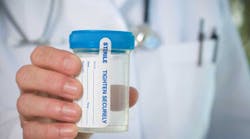The numbers are going the wrong way.
People are testing positive for drug use in the manufacturing sector at a higher rate. The most recent Quest Diagnosis Drug Testing Index survey found that from 2020 to 2021 overall positivity, which includes a number of drugs, increased by 4.5%. Looking at that number from 2017-2021 it was an increase of 28.6%. This survey is based on more than 11 million drug tests and covers a variety of industries, however, for this article, the data comes specifically from the manufacturing industry.
“The largest driver for the increase is due to marijuana,” says Barry Sample, Ph.D., Senior Science Consultant for Quest Diagnostics. The positivity rate for marijuana in 2020 was 2.7% and in 2021 it was 3.0%, which is a relative 11.1% increase year over year. “This increase is reflective of what is happening with marijuana at the state level as many states allow for recreational use. And states where it’s not legal, enforcement is very low.”
Legal Issues
The legal use of marijuana causes quite a dilemma for companies. “Some of the states that more recently enacted laws have written in explicit employee protections. An employer has to figure out the differences in state laws and federal laws and what responsibilities they have.”
A recent article in SHRM discussing these laws made that exact point. The article quotes Catharine Morisset, an attorney with Fisher Philips. "As more and more states legalize recreational cannabis use, employers should make some decisions about whether and to what extent they will be guided by federal law, which still classifies cannabis as a Schedule I drug like heroin and cocaine."
Even with that federal law, 37 states have now approved medical marijuana use, and 18 of those states and Washington, D.C., also have approved recreational use. In the article, there is an interactive chart of the US that shows the laws of each state.
Safety First
For employers, determining which laws they are required to follow is important, but not as important as keeping people safe on the job. “How do you determine impairment in the workplace? There is not a recognized standard like there is for alcohol. This is the case of the law getting ahead of the science,” says Sample.
And the laws vary so much across the country, it’s very difficult to create policies. For example, some states prohibit pre-employment drug testing for marijuana. But when it comes to safety issues there are exemptions. Workers who are subject to the U.S. Department of Transportation rules must regularly pass drug tests. This is also true for employees of the Department of Defense as well as those under control of the Nuclear Regulatory Commission.
What about employers not covered by federal laws? How do they proceed with drug testing, which companies generally use a five-panel screen that includes amphetamines, cocaine, marijuana, opiates and phencyclidine (PCP)?
Should they drop marijuana from the testing panel? In the SHRM article, Moriseets said that “more and more employers are deciding to stop drug testing altogether or are given the five-panel test but asking the labor not to provide the results for THC.”
Looking at the Quest Diagnosis Drug Testing Index, rates of positivity vary. One drug, opiates decreased from 0.18% in 2020 versus 1.2% in 2021, a relative 11.1% decrease. For amphetamine, the rate of positivity stated the same. But when you combine amphetamine and methamphetamine that rate increased going from 1.1% in 2020 to 1.2% in 2021.
Cocaine rates had a high increase moving from 0.16% in 202 to 0.19% in 2021, a relative increase of 18.75% year-over-year.
Looking at the five-year trends, the Index provided the following statistics of the substances included in the test:
- 6- Acetylmorphine - 45%
- Amphetamine +10%
- Cocaine Metabolite -5%
- Marijuana Metabolite + 93.8%
- MDMA/MDA -71.4%
- Methamphetamine +21.4%
- Opiates -51.5%
- Opiates ( Semi-Syn) -68.8%
- Oxycodones -50%
- Phencyclidine -29%
The increase in usage is directly related to safety. “The Index found higher rates of positivity in individuals tested after on-the-job accidents,” said Sample.
With this higher rate of positivity leading to accidents, employers need to navigate this issue. And it could become harder still as there is a movement toward decriminalizing other drugs. For example, two years ago, Oregon passed a bill to decriminalize possession of small amounts of hard drugs.
While legislation and popular attitudes toward drugs change, employers are still held to safety standards to protect employees and in a larger sense to protect society from accidents. “Employers will have to weigh the risks of testing but they need to consider safety-sensitive positions. It's a risk-based business decision," said Sample.

